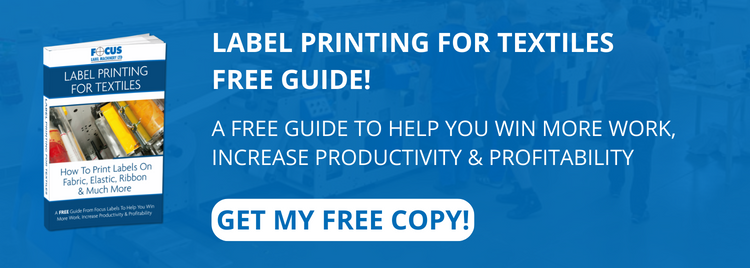
1) Manage Humidity and Static
Regardless of the type of textiles you print at your facility, humidity will play a role. Too-high humidity will negatively affect your machinery, causing damage and slowdowns in production. Adding to this, any change in the moisture content in the air can impact the textiles themselves. For example, added humidity will lessen the elasticity and tensile strength of some fabrics.
Fabrics are affected by humidity because of their ability to absorb and release moisture. Should the air in a facility be drier than the textile itself, the textile will release its moisture. Likewise, if the air is humid, the textile will absorb moisture. If the humidity of the textile decreases, it may become thinner and weaker. These vulnerabilities will cause it to accept ink differently, as well as cause a change in the way your machinery delivers ink to the textiles it prints.
Static Electrification
Relative humidity levels also contribute to the creation of static electricity, which can cause permanent damage to today’s computerised textile printing machinery. The moisture content of both the air and the textiles will determine the probability of static electricity occurring. Increased electrical resistance is the result of when the fibres in textiles lose their moisture. When this happens, they are no longer able to readily dissipate the electric charge generated by their contact with printing machinery.
When you consider the fact that static can discharge as far as five inches (130mm) and be several thousand volts, the danger to machine operators and the machines themselves becomes quite evident. A high degree of static will also cause issues with the manageability of the textiles, causing them to stick together.
2) Manage Machine Temperature and Pressure
Heat can be just as damaging to textile printing machines. Managing the heat in your facility should be one of the first steps in ensuring that machines are operating at maximum efficiency. Generally speaking, any heat-generating parts of the machine should be guarded in some way to prevent injury to operators. The same is true of any parts where winding of materials takes place.
For screen printing machinery, there should be a system in place which prevents access during times of ultraviolet or laser processes. Machines using dyes and inks applied at high temperatures of 100°C or higher should follow health and safety regulations for safe operation and maintenance.
In cases where high pressure is used to apply ink onto substrate, pressure gauges and safety valves need to be in place. Thermal locks may also need to be in place, as well as multiple bolts installed on machine doors to prevent them from opening accidentally.
3) Training and Quality Control
Even though modern textile printing machinery affords everything a facility needs, in terms of automatic calibration, you still need to ensure the consistent quality of printed products. To do this, colour management knowledge is necessary. This kind of knowledge can only come from complete operator training.
When a knowledgeable operator is running the machine, they understand what to look for in terms of visual differences between printed products. This kind of observation can detect changes in ink and textile batches, as well as alert the operator to possible issues with the machine itself.
4) Efficiency Strategy
Having an efficiency strategy in place for your textile printing machinery is another way to ensure its optimal operation. Check regularly for updates to the software of your machinery, and make it a habit to keep up to date with new machine versions that come to market.
If you find that your needs are growing, you may need to swap out existing machines for newer ones with the capabilities you need. If in doubt about which machines are best, consulting with your current machinery supplier can yield much in the way of new product and technological knowledge.
When all of the above are being monitored, you can ensure efficient production in your facility over the long term.







